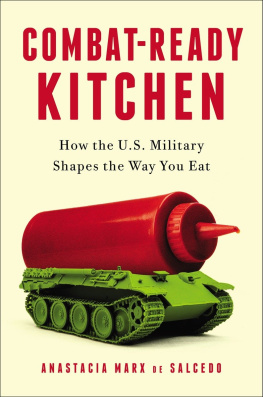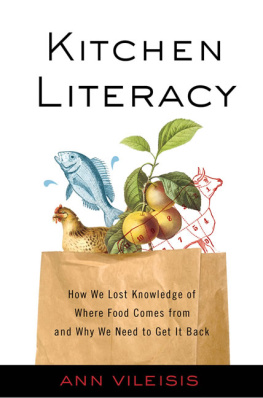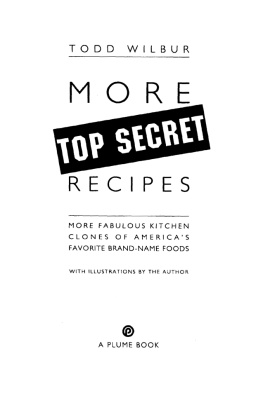Anastacia Marx de Salcedo - Combat-Ready Kitchen: How the U.S. Military Shapes the Way You Eat
Here you can read online Anastacia Marx de Salcedo - Combat-Ready Kitchen: How the U.S. Military Shapes the Way You Eat full text of the book (entire story) in english for free. Download pdf and epub, get meaning, cover and reviews about this ebook. year: 2015, publisher: Current, genre: Home and family. Description of the work, (preface) as well as reviews are available. Best literature library LitArk.com created for fans of good reading and offers a wide selection of genres:
Romance novel
Science fiction
Adventure
Detective
Science
History
Home and family
Prose
Art
Politics
Computer
Non-fiction
Religion
Business
Children
Humor
Choose a favorite category and find really read worthwhile books. Enjoy immersion in the world of imagination, feel the emotions of the characters or learn something new for yourself, make an fascinating discovery.
- Book:Combat-Ready Kitchen: How the U.S. Military Shapes the Way You Eat
- Author:
- Publisher:Current
- Genre:
- Year:2015
- Rating:5 / 5
- Favourites:Add to favourites
- Your mark:
Combat-Ready Kitchen: How the U.S. Military Shapes the Way You Eat: summary, description and annotation
We offer to read an annotation, description, summary or preface (depends on what the author of the book "Combat-Ready Kitchen: How the U.S. Military Shapes the Way You Eat" wrote himself). If you haven't found the necessary information about the book — write in the comments, we will try to find it.
Americans eat more processed foods than anyone else in the world. We also spend more on military research. These two seemingly unrelated facts are inextricably linked. If you ever wondered how ready-to-eat foods infiltrated your kitchen, youll love this entertaining romp through the secret military history of practically everything you buy at the supermarket.
In a nondescript Boston suburb, in a handful of low buildings buffered by trees and a lake, a group of men and women spend their days researching, testing, tasting, and producing the foods that form the bedrock of the American diet. If you stumbled into the facility, you might think the technicians dressed in lab coats and the shiny kitchen equipment belonged to one of the giant food conglomerates responsible for your favorite brand of frozen pizza or microwavable breakfast burritos. So youd be surprised to learn that youve just entered the U.S. Army Natick Soldier Systems Center, ground zero for the processed food industry.
Ever since Napoleon, armies have sought better ways to preserve, store, and transport food for battle. As part of this quest, although most people dont realize it, the U.S. military spearheaded the invention of energy bars, restructured meat, extended-life bread, instant coffee, and much more. But theres been an insidious mission creep: because the military enlisted industryhuge corporations such as ADM, ConAgra, General Mills, Hershey, Hormel, Mars, Nabisco, Reynolds, Smithfield, Swift, Tyson, and Unileverto help develop and manufacture food for soldiers on the front line, over the years combat rations, or the key technologies used in engineering them, have ended up dominating grocery store shelves and refrigerator cases. TV dinners, the cheese powder in snack foods, cling wrap . . . The list is almost endless.
Now food writer Anastacia Marx de Salcedo scrutinizes the world of processed food and its long relationship with the militaryunveiling the twists, turns, successes, failures, and products that have found their way from the armed forces and contractors laboratories into our kitchens. In developing these rations, the army was looking for some of the very same qualities as we do in our hectic, fast-paced twenty-first-century lives: portability, ease of preparation, extended shelf life at room temperature, affordability, and appeal to even the least adventurous eaters. In other words, the military has us chowing down like special ops.
What is the effect of such a diet, eatenas it is by soldiers and most consumersday in and day out, year after year? We dont really know. Were the guinea pigs in a giant public health experiment, one in which science and technology, at the beck and call of the military, have taken over our kitchens.
Anastacia Marx de Salcedo: author's other books
Who wrote Combat-Ready Kitchen: How the U.S. Military Shapes the Way You Eat? Find out the surname, the name of the author of the book and a list of all author's works by series.















